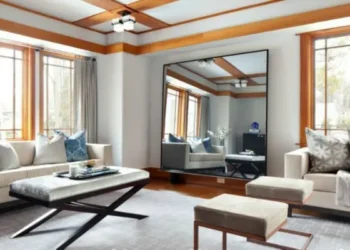What drives someone to choose a home in one part of a city over another? Or, more broadly, why do urban areas grow in specific directions? India’s real estate market provides fascinating answers, as trends in housing reflect the evolving priorities and lifestyles of its people. With urbanisation rising steadily, alongside shifts in work, technology, and culture, the way Indians live is undergoing a remarkable transformation.
Recent statistics tell an interesting story. As of 2024, India’s urban population stands at over 37%, with cities like Bengaluru growing rapidly (Source: Statista). This growth isn’t just about numbers; it’s about changing aspirations. People increasingly prefer homes that cater to modern living — spaces that balance comfort, connectivity, and wellness.
From Joint Families to Nuclear Households
One noticeable shift is the movement from large joint families to nuclear households. This change is especially prominent in metropolitan cities like Bengaluru. Professionals migrating for work want homes designed for smaller families, leading to a demand for more 2 BHK and 3 BHK flats. Developers have responded by creating spaces that focus on functionality without compromising on quality.
In addition, homebuyers today want more than just four walls. The emphasis is on community living, complete with shared amenities like fitness centres, swimming pools, and green spaces. For example, luxury 3 BHK flats in Bengaluru are becoming increasingly popular as they offer the perfect blend of privacy and community living, meeting the expectations of upwardly mobile families.
The Work-from-Home Revolution
The pandemic’s lasting impact on work culture has also left its mark on the real estate sector. Hybrid and remote work models have increased the need for homes that double as productive workspaces. Features like larger balconies, home offices, and improved internet infrastructure are what buyers are looking for.
Parkwest by Shapoorji Pallonji, for instance, stands out by offering homes that align with these new priorities. Located in the heart of Bengaluru, it caters to the growing demand for spaces that integrate modern designs with comfort and convenience. Its focus on creating a holistic living experience is particularly appealing to professionals seeking work-life balance.
Technology-Driven Lifestyles
As technology integrates further into daily life, smart homes have moved from being a luxury to a necessity. Home automation systems, energy-efficient designs, and app-controlled security features are now highly sought-after. Bengaluru, often called India’s Silicon Valley, is at the forefront of this shift. Buyers in this city, especially younger professionals, expect homes to be technologically advanced and future-ready.
Sustainable Living
Sustainability is another growing trend. With environmental awareness on the rise, homebuyers are actively seeking eco-friendly homes. Green buildings, rainwater harvesting, and solar panels are some features catching attention. Developers in Bengaluru are increasingly incorporating these elements into their projects to grab the attention of new-age buyers.
Proximity to Conveniences
Another trend shaping real estate is the focus on location and accessibility. Today’s homebuyers prefer properties close to work hubs, schools, and healthcare facilities. For instance, areas like Whitefield and Koramangala in Bengaluru have seen significant growth due to their proximity to IT parks and social infrastructure.
Also Read: Home Sweet Home: Designing Your Dream 3 BHK Apartment in Binnypet
The changing landscape of real estate in India mirrors the evolving priorities of its people. From smaller, functional homes to sustainable, tech-enabled properties, today’s housing preferences are driven by modern aspirations. Developers who align their projects with these trends are not just building homes but creating lifestyles that resonate with the new-age buyer.
In cities like Bengaluru, where the pace of change is rapid, developments like Shapoorji Pallonji Parkwest are redefining urban living by offering homes that reflect these shifts. As lifestyles continue to evolve, real estate will remain a powerful lens through which to observe these transformations.










